Kenneth A. Camp's Blog, page 20
October 2, 2015
How to Praise God While on the Battlefield
Guest Post by Josh Armstrong
 Josh and his wife, Jen, live in North Texas. They have a heart for children who need a family and hope one day to live in a foreign country as missionaries. They strongly believe that ALL Christians are “missionaries” and are called to minister with their lives somewhere, even if just to the community in your own backyard. Josh is a podcaster/blogger at ProjectFaithJourney.com.
Josh and his wife, Jen, live in North Texas. They have a heart for children who need a family and hope one day to live in a foreign country as missionaries. They strongly believe that ALL Christians are “missionaries” and are called to minister with their lives somewhere, even if just to the community in your own backyard. Josh is a podcaster/blogger at ProjectFaithJourney.com. A missionary friend in South America recently shared the following:

The road that is banked by both joy and sorrow, hope and vulnerability, peace and frustration is the road I think many a missionary must travel. There are “wins’ that triumph the losses, and yet still losses that covet our focus. May our eyes be ever set on Christ, the redeemer of the losses and the confident hope in the midst of our battles.Seth Powell
It’s true. The journey we all face can seem like a battle.
This is a great reminder that we are all missionaries.
When looking at life and the struggles we face, let me share with you truths about the struggles that we all face … They amplify! In fact, as Christians, they amplify things in 3 ways:
How inadequate we are.
How much a big deal our problems seem, and when we finally come around to it…
How big our God is.
Sure, we equate the mission field to some exotic location, but the actual mission field is not a place of hurt, but a place that amplifies the struggles we are facing. THIS is the place, believe it or not, where God can use us the most.
Now, how and why does this happen?
Comfort zones are strange things, aren’t they? It’s amazing that when we feel comfortable in a place, where life just seems at rest and easy — even in the midst of difficulties. But when we escape our cushy areas, the same difficulties seemingly get bigger and bigger than they actually are.
We’ve all been there: You’re child is having fun singing/yelling “FROZEN” at the top of their lungs. It’s cute… the first time around. But imagine that you are driving down the road, your lost, without cell signal or data, and you don’t know where you are… during that time you just need to focus. If your child is screaming “Let it go” at this point, it’s not as cute in the moment, is it?
Or another example: when our children continue to disobey you for the 15th time today, to continue doing what you’re asked them not to do over and over and over… It might not even be a big thing. It might even just be something simple like continually touching a potted plant — that to you is fragile. But, to them, is a fun “play toy.” In your mind, you imagine a broken plant or potting soil all over the place. Are they really going to hurt themselves? No. Does the plant matter more than them? Absolutely not. But their repetitive disobedience is mind numbing! At that moment, to what seems like the “billionth” time they are doing what you’ve ask them not to, you will probably lose your cool. The little thing they are doing is amplified in the heat of the moment.
When out of our comfort zone, our honest, true and real life struggles feel more real than when in our squishy, nested areas of life.
The Solution: Learn to see our situations as God sees them
The good news is that God is with us throughout our struggles; we just have to open our eyes to view it as glorious in the midst of pain and heartache. Allow your missions experience to take you past yourself all the way to number 3 and remind you of how good God truly is, how beautiful are the people sharing in that journey (colleagues and family), and wonderful the lives we get to all touch along the way, sharing the good news of a God that loves us all the same.
The truth is that God takes us all along a path to tell of His story — that is why we do what we do, right? It’s not about what we can get or attain, but it should ALL go back to give Him our everything.
I will close with this…
The struggles that we face often seem harder for us, while easier for others. Others seems to have it easy… but don’t be fooled. I know what you do. You look on Facebook and see others going on trips with their family, or having a wonderful time while you feel stuck where you are. You feel like they get to live it up while you have to deal with the terrible mess in your lap.
That path that we are on… it’s true, some have more interesting scenery along the way. Some are traveling the journey in exotic locations, missionaries around the world in their own right. But remember this: I can either stay jealous of their scenery through the eyes of my problems, or I can choose to come back to reality and be blessed where God has me in my moment, knowing that my beautiful scenery is all around. There is deeper beauty to come down the path God has me on. I just need to open my eyes to see it.
Allow God to change your change the view of your situation, by reminding ourselves of how big God is, how much we need him, and that He can be glorified despite our inadequacies. Truly, in ALL life’s ups and downs, to God be the Glory. We just need to daily refocus our view, to see our lives as God sees them.
To hear more from Josh, and his wife, Jen, visit www.ProjectFaithJourney.com.
September 29, 2015
An Interview with a Missionary – Dave Hanna serving in East Asia
Many People in the World Haven't Heard the Name of Jesus even Once
I met Dave Hanna in the beginning of 2006. My wife and I were part of a team of 10 that went to Pattaya, Thailand for Chinese New Year. The whole trip stretched me, including meeting Dave. He is tall, loud, and passionate. He definitely left an impression!
A little over one year later, Danielle and I were on a plane back to Pattaya, Thailand to serve with Dave and his team for six months.
As I mention in the video introduction, Dave might challenge you, make you laugh, maybe even cry. I encourage you to take time to watch or listen to this interview with Dave Hanna.
Here is how you can contact Dave Hanna. Currently he and Tan are in the United States (September 2015), so please don’t call the international number.
As Dave mentioned in the video, if you are looking for opportunities to send a missions team to the Thailand area, please contact him for details.
As all missionaries on the field, Dave and Tan ask for your prayer support. If you would like to receive updates, email Dave at the email address below.
Contact Info:
Email: director@seaops.org
Web: www.seaops.org
Skype: epicrider (usually done by setting up appointment via email, thanks)
Telephone: +6681-058-7680 (be careful about the time zone difference of 12 hours)
U.S. Telephone for the Fall of 2015: 480-819-4025
Financial Support Info: Please send any gifts to . . . . .
Northbrook Church
ATTN: Missions Support (Hanna’s)
421 U.S. Highway 45 W.
Humboldt, TN 38343
Please do be sure to designate that the gift is for the Hanna’s. Northbrook is doing a lot of things in missions and they need that info to keep things straight.
September 25, 2015
Hope Shines Here
#RunForShoes Buckner's Shoes for Orphan Souls
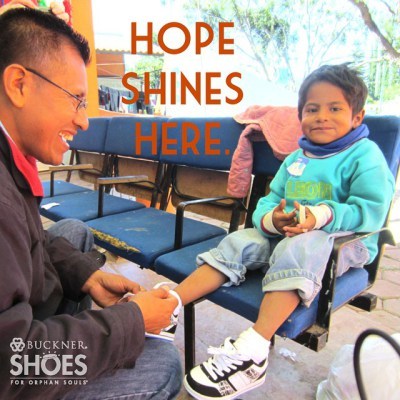
When you aren’t sure how to help the millions around you that need help, usually something simple goes a long way. That’s the case with Buckner’s Shoes for Orphan Souls.
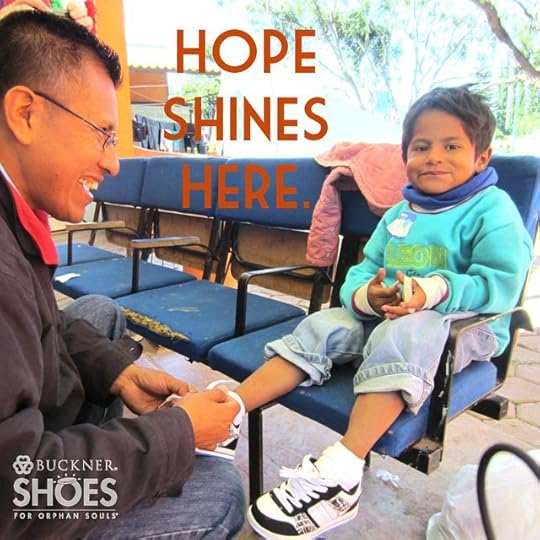
For a small donation you can provide new shoes for a child who otherwise might not have their own shoes, not even one pair.
Here is some information provided by Buckner about why shoes are so important:
Why Are Shoes So Important?
Walking barefoot in muddy or rocky terrain can cause injury to the foot, opening a child up to life-threatening illness.
— Podoconiosis is a debilitating condition that can be completely prevented by wearing shoes. It affects 1 million people in Ethiopia and about 500,000 in Cameroon, according to the World Health Organization. The disease also appears in Rwanda, Burundi, Tanzania, Central and South America, India, Sri Lanka and several other places. It starts as an inflammatory reaction to walking on soil with volcanic deposits. The foot and lower leg swells and the skin becomes rough and lumpy. Besides the problem of limited mobility, people with podoconiosis become social outcasts, though the disease isn’t contagious.
— Hookworm, which can enter the body through cuts and injuries to the feet, can cause iron deficiency and anemia. “If children get iron deficiency and anemia, they don’t develop properly, and the most important thing that doesn’t develop is the brain,” says Dr. Cedric Spak, infectious disease specialist at Baylor University Medical Center in Dallas. “With their development stunted, they end up having an IQ of 60 to 80. Someone who’s able to hold a reasonable job in the economy has an IQ of 100 to 120.”
— The chigoe flea, or jigger, is another parasite that threatens bare feet. It’s native to Central and South America but can now be found in sub-Saharan Africa, too. It burrows into the soles of bare feet to feed on the host’s blood until it lays eggs and dies. They can be removed with tweezers or a sterile pin in a painstaking and painful process. Sometimes, the host is vulnerable to infections in the wound where the jigger burrowed into the skin. Severe cases can cause toe deformation and nail loss. It’s a painful, itchy condition.
Many schools around the world require children to wear shoes to attend, but for many poverty-stricken families, shoes are a luxury they cannot afford.
When you give an orphan a new pair of shoes, it communicates love and helps them know they are special – that they are not forgotten.
Why new shoes? They last longer, and as a gift to a child, they communicate volumes about what someone is worth. Simply put, we think the children we serve are worth it.
Buckner Shoes for Orphan Souls Statistics
Since 1999, Buckner Shoes for Orphan Souls has distributed more than 3 million pairs of new shoes and socks to children in 80 countries.
About 30% of all shoes donated to Shoes for Orphan Souls stay in the United States.
In 2014, we distributed 184,542 pairs of shoes to orphans and vulnerable children in the United States and around the world.
Learn more about Shoes for Orphan Souls from our video library .
Want to Make This Fun?
Join this year’s Run for Shoes fun run! It’s a little different this year in that you run wherever you live. I am really bummed because as you probably know by now, I just had surgery on my ankle. So, no running for me!
However, if you run, as an individual or team, contact me with your fundraising page, and I will support you with a small donation!
Go to RunForShoes to get more information and register today! Don’t delay because the event is any day between October 3 and October 10, 2015.
I hope to hear from you! Use the form below to send me your fundraiser page.
[contact-form]
September 22, 2015
Ankle Surgery Update
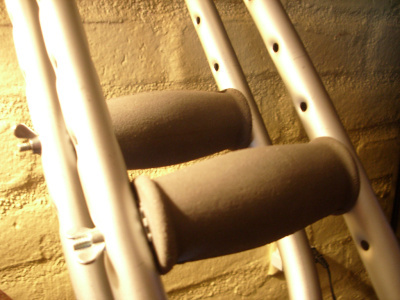
Yes, if you haven’t heard, I am having ankle surgery tomorrow (9/23/15). I tore the anterior tibilias tendon in my right ankle. The tendon runs from about the arch of your foot across the front of your ankle up your shin to just below your knee. Pretty major tendon. I am told it’s uncommon for this tendon to rupture, but mine did.

I know when I injured my ankle. I just didn’t know how I injured it. The tendon ruptured while I played basketball the last week of May. I took a conservative approach to the injury and saw a little improvement. But of course that helped only so much.
In August I had my first MRI which confirmed that the tendon indeed had ruptured. Over the next couple of weeks I met with two ankle/foot surgeons who gave me similar feedback.
I don’t have to have surgery to repair the tendon, but both surgeons I met with recommended I have the surgery. The window i quickly closing on being able to successfully repair the tendon. So, it’s now or never, as they say.
Honestly, I am not excited about either option. If I don’t have surgery, I will suffer complications the rest of my life. By having the surgery, I am looking at a 6-8 month recovery time.
Why I am choosing surgery:
Short-term pain for long-term gain. Even though the idea of surgery and several months of recovery don’t excite me, I try to keep it in perspective. 6-8 months versus hopefully 30 plus years.
I am still young! I am 54 years young! I am not ready to drastically slow down. If I don’t have the surgery, I might not have that choice. My basketball days are probably over, but I want to hike, run, and find another sport to play.
I have a five-year-old son. Reason enough to fix it. I want to experience life with my son as he grows up, not just watch him.
I believe in miracles. I pray daily that God will heal it. Even though we are moving quickly toward surgery day, I pray that the surgery is beyond successful. I also pray that the tendon heals beyond the doctors expectations. (I will accept any prayers you feel compelled to lift up!)
The recovery looks like this—6-8 weeks of non-weight bearing; followed by 6-8 weeks in a walking boot; intense physical therapy to regain mobility and strength.
Many plans I had for the Fall and Spring are on hold now. But, thankfully, much of the work I do I can do from home.
As a treat for you, I have lined up several guest bloggers for the first couple of weeks after my surgery.
I hope you enjoy reading blog posts from the following:
Matt Peacock – Former Pastor and current Executive Director of Partners in Hope Lake Travis. www.PartnersinHopeLakeTravis.org
Madeleine Melcher – Foster child/adoptee, adoptive mom, speaker, author, and blogger. www.OurJourneytoYouAdoption.com
Josh Armstrong – Web designer, podcaster/blogger, foster care/adoption advocate, and missionary. www.ProjectFaithJourney.com
Taylor Krigsman – Teacher, author, and blogger. Taylor grew up in a family that fostered children from the time she was three-years-old. www.Taylortalks.net
In each blog I provide ways to get in touch with these guest bloggers. Please visit their sites, get to know their work, follow their blogs, social media, and support them!
I appreciate and thank them for helping me out!
September 18, 2015
Year Three Adoption Update
4 Things I Learned
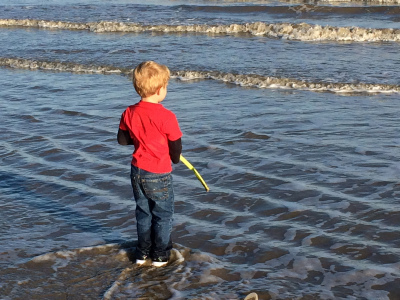
I joyfully remember three days regarding my son—the day he was placed in our home by CPS, the day we adopted him, and his birthday. Usually I recall the dates of the first two days of celebration more quickly than I can his birthday. I get some strange looks when I am asked when his birthday is, and I take a few moments to answer.
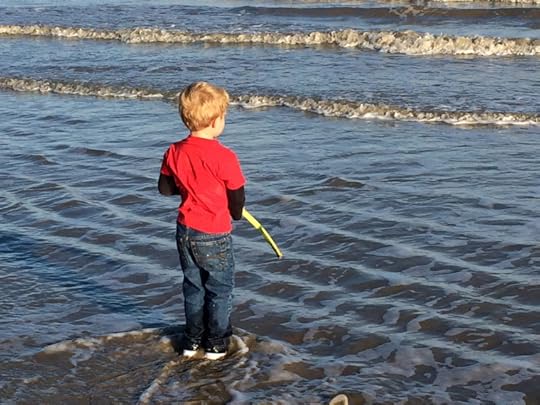
September 21 we will celebrate year number three since his gotcha day! I promise, mostly to our son, that I won’t keep doing these updates into his teen years.
Highlights
Preschool
Our son began his third and final year of preschool a couple of weeks ago. He has handled the transition to a new classroom, classmates, and teachers much better this year than last.
He struts or darts down the hall to his classroom like he owns the place now. Teachers and peers know him (he’s hard to not notice!). I greatly appreciate everyone who has invested in him at his preschool.
Family Vacation
In May, we took our first week-long family trip. Just the three of us went to the coast. Danielle and I were concerned how it would go without any other families going with us. But Danielle’s comment on our way home summed up the week, “that was the best family vacation ever!”
Learning to swim
A precious friend gave our son three swim lessons over the past 12 months. He has gone from a fear of being under water to doing cannon balls off the side of the pool. A few weeks ago at the public pool he said, “Move out of my way Dad! I want to swim across the pool!” Which he successfully did with a little dog paddling, turning over onto his back, then back to swimming. But he did it!




Challenges
Attachment
How would you feel if your child ran the other way when they got hurt? For a long time when our son would hurt himself, even if Danielle was right next to him, he would push her away and come to me. Sometimes he would even go to a complete stranger!
Sensory
We already knew that our son struggles with sensory input, but it manifested in more ways this past year.
He went from licking all kinds of surfaces to licking his hands and chewing on his fingers and shirt. So, we invested in a few chew items.
He also struggles with regulating his body when he is in stimulating environments. This summer Danielle and I watched as our son along with 20 or so other 2-4 year-olds sang some songs they learned at Vacation Bible School. We joined all the other parents holding phones and cameras as we zoomed in on our cute little guy as he stood with a huge smile next to his best friend.
Then the music began. Loud. Bright lights. Lots of motion.
At first, he did great. He sang. He kind of did the hand motions. Then, he began licking his hands. He pulled on his friends hands. He turned in circles, then hopped onto the back row of the risers and began shaking the railing.
The smile on my face froze. I am glad that I understood what was going on, yet it still hurt my heart to see him struggle with all of the stimulation.
Therapy
Therapy really is part highlight, part challenge.
We understood that our son’s struggle with attachment and sensory input was an outcome of early trauma. We have learned over the past few years that trauma affects brain chemistry which causes these kinds of struggles.
So, we sought help.
We first spent several months with play therapy. Honestly, the first few sessions I sat there as the therapist simply watched our son play with the room full of toys wondering why I was paying for this. Then over time, our son began to talk about things. Deep things.
Then gradually, we saw an incredible change in his connection to both Danielle and me.
At the beginning of this summer we began doing Occupational Therapy to help him with fine motor skills and regulation. These sessions have helped him learn how to calm his body when it’s over-stimulated. He just began his third year of preschool, and it’s fun to see him enjoy craft time. He is able to focus as he colors, cuts, and create. He struggled with all of these things one year ago.
Then there is me.
When my son would have a meltdown or deliberately disobey me, mentally I knew how I should respond. Nurture while correcting. Nurture while correcting. NURTURE WHILE CORRECTING.
But many times I feel like someone has their hand wrapped around my neck like I am one of the those stress balls making my eyeballs bulge about to pop out of my head. Then everything I learned about how to control my voice, my facial expressions, etc., well let’s just say I default to yelling threatening consequences if he doesn’t shape up. NOW!
So I decided it was time for me to get some help too. I met with a counselor for several weeks exploring what I brought to the equation. I needed to empty as much of my emotional cup as possible, so I could respond to my son with patience and kindness.




Some Things Learned
Year three has brought joy and challenge! Through it all I have learned a few things:
Application is different than knowledge. Even though Danielle and I know a lot about brain trauma, helping children from a hard place, different kinds of therapy, etc., it’s hard to apply it in real life.
My baggage causes some of his behavior. I already knew this, but I saw it manifest, sadly, this past year.
It’s a process. I think that adoptive families often think that they can “fix” their kids or love them to wholeness. At some level that’s true. But it isn’t a one time deal. It’s a process over time. And different stages of life and events cause different challenges. So, it’s beneficial for me to understand that and hang in for the long haul.
I love being his Dad! Not that I just learned that this past year, but I definitely confirmed it! I often forget that he isn’t my biological son.
I know this one thing…he will always be my son. He is a part of our Forever Family.
September 15, 2015
Considering Foster Care or Adoption?
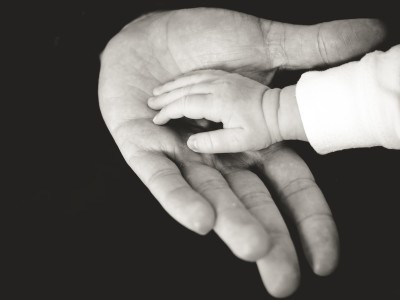
If you are considering foster care or adoption, you probably have questions like: How much does it cost? What is a home study like? What kind of classes do I need to take?
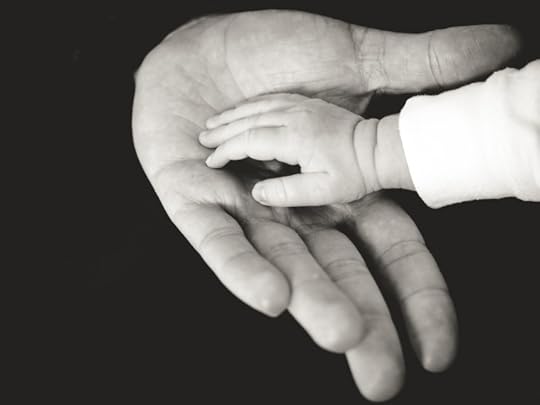
All good questions, and you are probably overwhelmed.
Our Story
My wife and I can identify with you. Through the years we considered domestic and international adoption. And every time we ventured near I felt completely overwhelmed.
Twice friends approached us about domestic adoption. The process seemed complicated to me with hurdles and potential heartache. We didn’t pursue either opportunity.
When we lived in Thailand for six months in 2007, we decided we could check into adopting a Thai child. So, we went to the local orphanage to find out what we needed to do. Even though many children lived in the orphanage, we quickly learned that it was not an easy process, if not almost impossible for an American to adopt from Thailand.
Then in 2010 we decided to look into adopting through foster care. We had no idea where to begin. We sought out information about how to navigate the world of adopting through foster care.
In each case, we spent time learning how to adopt—domestically, internationally, and through foster care.
Why Do You Want to Foster or Adopt?
However, we hadn’t spent much time on why we wanted to adopt. Sure the obvious answer was that we wanted a child to call our own. But what were our motives and expectations? How would this decision affect our marriage and extended family? What would this decision cost us?
That is the objective of a new ebook available on Amazon—Respond to the Call to Care for Orphans: Book 1: Count the Cost.
If you are considering foster care or adoption, I want to help you think through this life-changing decision. So this book isn’t a how-to book. Odds are you are not convinced or sure yet that this journey is for you. That’s perfect! In fact, you just might decide to not foster or adopt after reading this book. Not a bad decision.
Does that sound strange to hear me say that since I am a strong advocate for foster care and adoption? Here is why I say that. The truth is that bringing a child into your home as a part of your family is a big decision that will have an effect on everyone involved. Your marriage. Your current children, whether they live at home or not. Your extended family. Your friends. This decision will affect everyone.
So, I urge you to count the cost.
But hold on a second, if you decide that you aren’t cut out or not ready to foster or adopt, you are not off the hook, at least in my humble but accurate opinion. We all are called to care for children who are without a family. Your role just might be a bit different. A book later in this series will look into ways you can support foster and adoptive parents and their children. So please read that book when it comes out. Or better yet, begin to research ways now you can support families who have adopted or foster children.
So, are you still here? I mean, are you still considering this life-altering decision? Then let me tell you more about what you will find in this book.
I will help you process through your expectations and motivations.
I will help you think through what you bring to the relationship.
I will share some things you should know before you bring a child into your home (compiled from many who have gone down this road)
If you are considering foster care or adopting through foster care, I will…
Help you understand a little what a foster child’s life is like
Give you a heads up about how some will react to your decision to foster.
I will wrap up by helping you understand how your decision will not only impact a child, but also the biological family.
I hope to help you avoid making a mistake. Or at least a decision that leaves you stressed out, burnt out, and ready to return the child to sender. That child isn’t a cute little puppy or kitten that you picked out at the local animal shelter that you can find a home for later if “things don’t work out.”
As traumatic as that might be for that animal, that should never happen to a child. But it does. While the goal in foster care is stability, it is common for a foster child to change homes multiple times.
Adopted children also experience this trauma. While it’s hard to track these statistics, adoptions that end in disruption (an adoption process that ends after the child is placed in the adoptive home but before the adoption is finalized) happen as often as 10-25% of the time. And adoptions that end in dissolution (an adoption in which the legal relationship between a parent and a child is severed after the adoption is legally finalized) happens 1-5% of the time. This includes adoption through foster care, domestic, and international agencies. (www.childwelfare.gov)
Now that is trauma!
This is why I once more urge you to count the cost of this decision.
So with that in mind, are you ready to explore the possibility that you are ready to bring a child into your family either temporarily or forever?
Get your copy today!
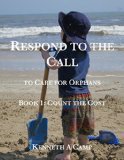
Respond to the Call to Care for Orphans: Book 1: Count the Cost
September 11, 2015
How to Determine What Cause to Support

So many good causes. Social media does a fantastic job of spreading the news about those who don’t have a family, haven’t heard the gospel, need rescued from slavery, or just need a helping hand.

Such limited resources. All of us only have 24 hours in a day. Sure some have fewer commitments than others, but still. None of us has all the energy or money that it would take.
Downside is that this fact often keeps us from doing anything at all. If I can’t help everyone, I won’t help anyone. I don’t want to play favorites or make a choice.
If I had my choice, I would foster and adopt from right here in our community (which we did) AND be on the mission field in a foreign country while serving on multiple boards of nonprofits doing great things. Then every time I was made aware of a cause that needed money, I would give, generously.
The truth is I can’t be in two places at once. I only have so much time to devote to nonprofit volunteerism. And who among us has an unlimited amount of money?
The reality is that none of us can respond to every good cause. So, what do we do?
Embrace What Is Placed Right in Front of You
What does that look like?
Paying attention. Sometimes we get distracted by things that get the most publicity. Usually these are things that are far away or are the trendy thing. But what you might have something right in front of you begging for attention.
Taking hold. To embrace means to take hold of something in your arms. Many times we hop from one cause to another never really taking hold of what’s in front of us.
Accepting enthusiastically. Embracing also means accepting and supporting. What is right in front of you might not get any other attention. Question is will you embrace it enthusiastically?
Understanding seasons. In my experience, what we embrace as a good cause many times is only for a season. For example, my wife and I lived in Thailand as missionaries for six months. We volunteered at a children’s home for three years. I served as a missions pastor also for three years. I am about to resign from a nonprofit board that I have served for over four years. All of these are examples of opportunities that are still good causes, but my involvement in them was for only a season. And, that is ok.
Take a look at who and what is right in front of you. What do you see? A child who needs a family? A neighbor who has a need? An opportunity already brought to your attention?
Bottom line—you have the time, talents, and resources to invest in something or someone without much effort. Simply open your eyes and heart to what God has placed right in front of you and embrace it.
September 8, 2015
Can We Remove the Stigma of Asking for Help from Our Culture?
5 Causes of What Makes it Hard to Ask for Help

I am the classic guy who struggles with asking for help. Thank goodness for GPS maps! Seriously though, as I age I have gotten better. These days I readily admit I need help from time to time.

What Causes the Stigma
Even though we joke about men refusing to ask for directions, a stigma really is attached to asking for help. I can think of a few reasons why it exists:
Shame. In the work I do with lower income families, it is very common for a person to ask if we can do work on their property without the neighbors knowing. Their question is laden with shame.
Failure. As a foster care and adoptive parent, I have seen many foster families struggle to the point of burn out. Why? They don’t have an adequate support system around them. Maybe they think that if they ask for help it communicates failure to fulfill their commitment to foster.
Self-sufficiency. I’m not sure if this is cultural or not, but we Americans are taught that “if it’s going to get done, it’s up to me”. Really, I don’t think it was quite like that a few generations ago. Think about the whole idea of a barn raising. Communities used to work together to get things done.
Sense of uniqueness. One of the subtle lies we believe. If we have a need, struggle, or challenge, we think we are the only ones dealing with it.
Pride. Closely related to self-sufficiency, but even a deeper issue. Pride tends to not only not ask for help, but it also works to cover up any thing that resembles a need.
No regard for race, creed, or income
I find the negative stigma attached to asking for help affects any person or family regardless of their economic status, age, race, etc. How often do we hear the reply, “No I am good.” when a person is asked if they need some help?
The stigma associated to asking for help whispers the lie that if we ask for help people will look down on us. They will think we are a drag on society; a disappointment; a failure. We couldn’t do “it” on our own, so we had to ask for help.
The “it” can include our parenting, our marriage, our ability to have enough to make ends meet, and so on.
Life is hard!
The fact is…life is hard. Life doesn’t discriminate. Doing family is hard. Earning a living is hard. Dealing with disappointment is hard. Struggling with failing health is hard.
Yet we act as if no one will understand our struggle.
Can We Remove the Stigma?
The things listed above paralyze us when we need help. Often, even if we want help, the stigma attached to it makes nearly impossible to do the asking.
Then when we see signs that a person or family is struggling, we often take the approach of, “I don’t want to intrude” or “I don’t want to get involved in someone’s else’s problem”.
We see a young mom obviously overwhelmed not paying adequate attention to her children, maybe even leaving them alone for a moment to get something done.
Or, a neighbor’s yard goes unkept for several weeks possibly not because of laziness, but a family issue.
The young woman and neighbor might not even think to ask for help because of the engrained stigma.
Sadly what do we often do?
We call the child protective services to check into the observed neglect by the young mother.
We call the home owner’s association or city to report the neighbor with the knee-high grass who is driving down my property value.
What if instead we simply offered help?
“I can watch your kids for a few minutes while you run into the store”. “I noticed your grass getting tall. I don’t mind mowing your yard when I mow mine if that will help”.
I know, that means risking someone telling us to stay out of their business or getting right into the messiness of it.
But, if we are ever going to remove the stigma of asking for help, we need to get better at offering help.
Compassion doesn’t mean seeing a need and feeling bad about it. It means seeing a need and doing something about it.The Art of Neighboring
Every child and every parent (every person) should know that whenever they have reason to celebrate, worry, or grieve, someone will notice, and someone will care.Strong Communities
September 4, 2015
6 Reasons Why You Probably Aren’t a Missionary

Many of you are thinking, “I don’t even want to be a missionary!” I have news for anyone who calls themselves a Christian. God considers each of us a missionary. He sent Himself to us. Now He is sending us to others.

What got me thinking about this is a lot of the news describing the lines of division between people groups. Not only in America, but around the world.
These lines are drawn along things like race, sexual orientation, “the haves and have nots’, religion, political leanings, what family you are from etc.
My worldview
I have a simple worldview. There is a Creator God who holds all things together. His act of creation spun this world into motion. He not only continues to hold His creation together, He also pursues anyone and everyone. However, there is another Person whose chief aim is to destroy all that God has created. He does everything in his power to divide and pull apart what God intends to hold together.
What I find interesting is God chose for us to be His ambassadors; His missionaries. He chose to send us to others with the Good News of who He is.
A missionary is anyone who is sent with a message of good news into a culture or people group different than their own.
That usually means going to another country, but it can also mean going somewhere within your own country, community, or even across the street.
So if God thinks that all of us who call ourselves Christians are missionaries, then why aren’t we?
Here are 6 Reasons You Probably Aren’t a Missionary:
You don’t like hearing foreign languages. I studied Spanish through middle and high school, but I grew up in Texas. I heard Spanish all the time. Even if I didn’t understand the language, it sounds familiar to me. Then when I was about 45, I began traveling to East Asia. That was a completely different experience. I happen to enjoy learning a new language, but for many, they don’t even like hearing it. If that’s the case with you, you won’t even consider getting to know someone if you can’t understand their language.
You don’t try to understand people who are different than you. If they listen to different kinds of music, eat different food, enjoy different entertainment, have a different religion, political view…does that end any chance for you to engage them in a friendship much less a conversation?
You don’t like anything new in your life. Do you like to keep everything the same? You’ve got life figured out, so why change anything? Not a bad way to live if you aren’t sent into the world.
You don’t like people who have a different worldview. Not only do you not try to understand them, you just don’t like them. And you let it known that you don’t like them. You have not-so-nice names for people who are different than you. I am not saying that you agree with everyone, but if you’re dislike is preventing you from even engaging them, you’re probably not a missionary.
You are afraid of people different than yourself. Your fear that they might hurt you, negatively influence you, rub off on you, etc. will definitely keep you from knowing them.
You think it is someone else’s mission. Maybe none of the first 5 reasons describe you. You simply don’t think it is your mission or “calling”. Well, again, God says it’s your mission.
Notice a pattern? How many times is the word different found in that list?
A missionary many times is simply a Good Samaritan. They do good for those…
They don’t know.
They don’t understand.
They don’t like.
If this generation of Christians doesn’t respond to the call to live life as missionaries, God will raise up another until He accomplishes His mission.
September 1, 2015
No Two Foster Families Look the Same
What Could Your Family Look Like?
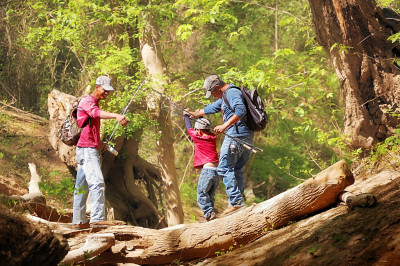
The trouble with stereotypes is that they rarely are accurate. My idea of the stereotypical foster family was one who always had about six foster kids in their home. Their home arranged half warehouse, half dormitory style. And, of course they drove a van constantly full and on the go.
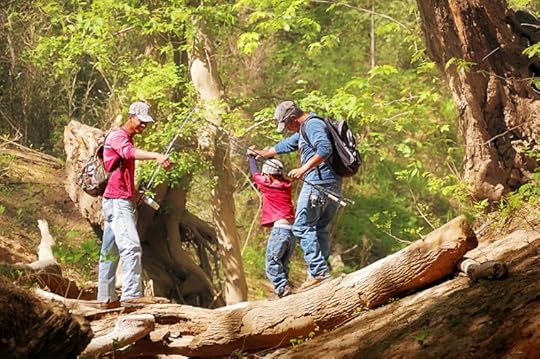
Granted, many foster families DO look like that, and that’s great! I admire and respect these families, both the parents and biological children, who welcome foster kids into their home either for a few days or sometimes a few years at a time.
However, sometimes this deters other families from ever seriously considering fostering a child, because they think this is what is required of every foster family.
I hope to dispel that myth so that more families will entertain the possibility of fostering a child.
Our Family
I will begin with our family. My wife and I had been married over 20 years when we first considered foster care. Our first intent was to straight adopt a child through foster care. Many children in the foster care system, sadly, are no longer working toward reconciliation with their biological family. So, they are available for adoption.
After our home study (with encouragement from our case worker), we decided to also take foster only children. These are kids whose families are working toward reconciliation.
Our first, and only, placement was an eight-month-old boy. We thought he would live with us for a few weeks. 15 months later we adopted him.
For now, he is the only child we have fostered.
Other Examples
Besides foster families who foster many kids over several years, and ones like our family who foster only one child, here are a few other examples of foster families.
Straight Adopt – I know several families who met a child or sibling group who were in foster care and available for adoption. I have blogged about two such families, one from the adoptee’s viewpoint and the other from the adoptive mother’s. You can read about them here:
One’s Life Reflects the Heart—Andre Alger’s Story
Let My Life Be the Proof of His Love—The Brillante Adoption Story
Level of Need – Every child who is in foster care has suffered loss and trauma. Therefore, they will have needs that children fortunate enough to have not experienced these things probably won’t have. Still, some children will have a greater level of need than others. Some foster families intentionally foster children with a high level of needs. These children may have physical challenges. Others have difficult emotional challenges to overcome. Not every family is capable or prepared to foster a child with high needs. But you might be.
Kinship – Usually after CPS becomes involved, they first look for an extended family member, such as a grandparent or sibling, who can and is willing to care for the child until the parents are allowed to reconcile with their child.
Safe Families – I am introducing another option that may be new to you. Safe Families is an organization that recruits, screens, and trains families to step in to help families in times of need. Safe Families provide care for children for a short period of time until the biological family can get back on their feet. To learn more go here – Safe-Families.org.
Bottom Line
The reasons a child needs a foster family are numerous. Yes, many have faced heartbreaking trauma and need families prepared to help them heal. Others have physical needs that require constant care that their biological family could or would not provide. Then many more simply need a safe and loving place to call home for a short period of time while their own family gets their life together.
The purpose here is to shift from the stereotypical mindset of what a foster family looks like and to the fact that every family struggles at one time or another. The question is, how can your family lend a helping hand to another family or child in need? What could your family look like?
If you are a foster family, what does your family look like?



